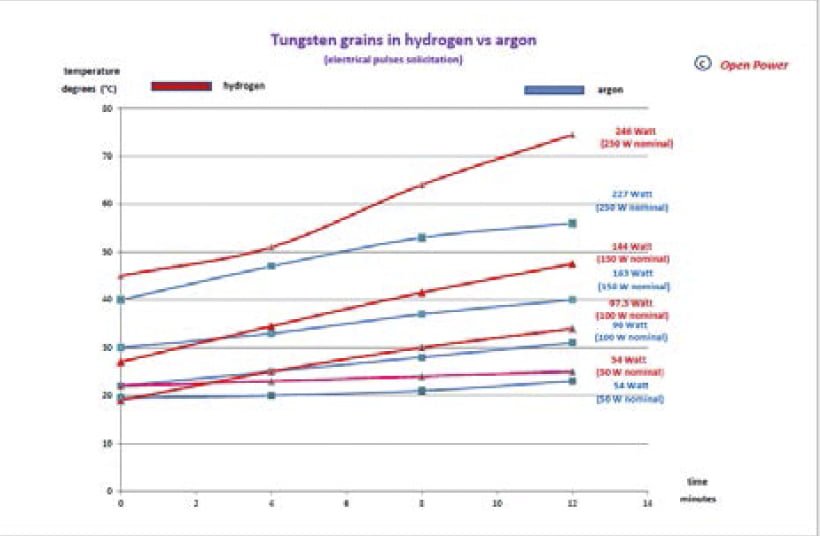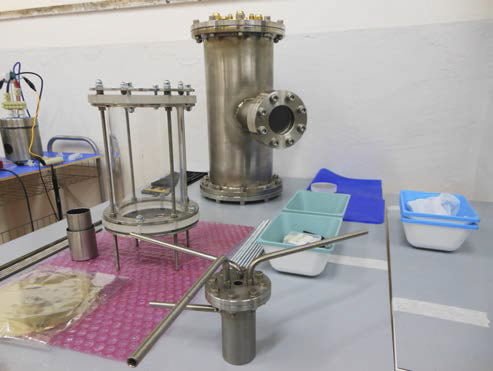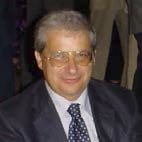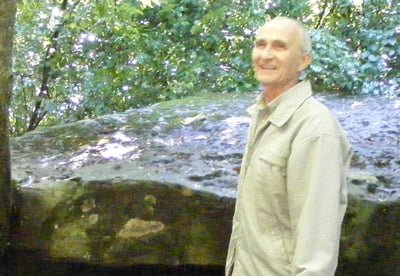The Open Power Association at Hydrobetatron.org has published Newsletter #15 devoted to the E-Cat test report.
A .pdf of Newsletter #15 in the original Italian can be downloaded from Hydrobetatron.org.
The newsletter begins with a Review by Luciano Saporito of a new paper by Ugo Abundo hypothesizing on the E-Cat reaction. We reproduce the full Review here in English and also provided are links to two Abundo reports on the E-Cat.
********************************************************************************************
About the Ugo Abundo’s hypothesis for explaining and enhancing Rossi’s E-Cat reactions, via R.M.Santilli’s Neutroids
By Luciano Saporito
OpenshareLAB
Open Power Association Rome, Italy
In the original paper “Representation and Enhancement of the Excess Energy of Rossi’s Reactors via Santilli’s Neutroids and Nucleoids”, Ugo Abundo proposes a hypothesis for explaining reactions involved in Andrea Rossi’s E-Cat reactor, based on Nucleoids and Neutroids of R. M. Santilli.
Such a hypothesis, in the opinion of the writer, is very important from the scientific viewpoint, because of Andrea Rossi, standing the related trade secret strategies, at date maintains undisclosed the nature and function of the unknown substance that catalyzes the behaviour of E-Cat reactions towards its extraordinary performances. Consequently, the third-party tests on the reactor, at date, cannot be considered scientifically complete and exhaustive , owing to the lack of knowledge about all parameters involved in the reactor operation.
Exclusive finality of the above mentioned tests is verifying and certifying the continuous operation of the reactor and the related COP. Indeed, such results were awaited by researchers of the field and public opinion since beginning of Rossi’s claims.
It should be noted that the novel independent report dealing with the Rossi’s reactor performances: http://www.sifferkoll.se/sifferkoll/wp-content/uploads/2014/10/LuganoReportSubmit.pdf shows transmutations that cannot be explained via Quantum Mechanics, specially owing to the impossibility of proton skipping the coulombian wall and the inadequate cross-section about proton electronic capture in the operating conditions.
On the other hand, considering both the energy concentration amounts and the isotopic changes shown in the comparative analysis between reactants and ashes, no doubt is allowed: low energy transmutations does occur.
Thus U.Abundo hypothesized a model according to which new neutron-like particles can interact with Lithium and Nickel nuclei, in the specific isotopic occurrence in the reactants, leading to the proper isotopic chain detected in the ashes.
The paper functionally reviews a systematic synthesis of research work of prof. Ruggero Maria Santilli by decades, since the founding of a new mathematics, then a new physics oriented towards the solving of the neutron structure problem, preliminary to the understanding of the change of viewpoint needed for conceiving and employing the models leading to the idea of neutron-like neutroids and their behaviour.
Now, we will recall page 29 of the above mentioned independent report, where some hypothesized reactions are detailed. The report explicitly underlines the impossibility that the reactions may occur, notwithstanding their capability to account for the observed quantitative isotopic content.
p + 7Li → 8Be → 4He + 4He
p + 58Ni → 59Cu
The reaction equations might result admissible if the proton to be involved, helped by an electron, were in a bound state (Santilli’s Neutroid) masked as a neutral particle, so avoiding the coulombian repulsion to enter into the 7Lithium isotope nucleus, turning it into the unstable 8Li one: the latter can thus experience a β-decay, holding the proton in the nucleus, leading to 8Beryllium, decaying into α particles.
The following equation can be obtained via the first of the previous ones, by simply adding an electron to both members:
(p + e) + 7Li → 8Li → 8Be + e → 2 α + E
The possibility of burning the 7Li isotope by employing neutroids is particularly relevant in the cosmological research field: indeed, in astrophysics a problem known as “Cosmological Lithium Depletion” is everywhere present.
It deals with the lack of interpretation about the observed 7Li presence less than the one as predicted by theories concerning the relative abundances of elements. The above mentioned considerations might represent a solution to the indicated discrepancy standing the chance, near the stars, of finding very high magnetic fields, in the regions involved with stellar prominences, of magnitude order greater than 1012 – 1014 Gauss, capable of inducing neutroid formation.
In a similar way, a bound proton (Santilli’s neutroid) can enter in a 58Nickel nucleus, turning it into 59Ni, emitting the masking electron, holding in the nucleus only the proton, thus generating 59Cu and so on, for higher mass Ni and Cu isotopes:
(p + e) + 58Ni → 59Ni → 59Cu + e + E
The neutron-like particles don’t need the notorious 0.782 MeV per proton, to turn it into a real neutron, capable to penetrate the target nucleus, thus leading to the transmutations to be explained.
Such particles, whose existence was firstly hypothesized by Don Carlo Borghi and successively theoretically justified and experimentally detected by R.M.Santilli, were called, by Don Borghi himself, “neutroids”.

Fig, 1.Neutron as a Hydrogen atom Energy level. [from J. V. Kadeisvili, The Rutherford – Santilli Neutron, Hadronic Journal, 31, 1-114 Institute for Basic Research, Palm Harbor, Florida, U.S.A. (2008]

Fig. 2.Proton and electron captured by magnetic field. [from J. V. Kadeisvili, The Rutherford – Santilli Neutron, Hadronic Journal, 31, 1-114 Institute for Basic Research, Palm Harbor, Florida, U.S.A. (2008]
If confirmed, the model would constitute a great confirmation of Santilli’s Hadronic Mechanics, from the microscopic world roots to the cosmic boundaries, furtherly (from the industrial applications viewpoint) capable to explain and foresee the best geometrical and physical configurations for the esoenergetic reactions (clean energy production) towards the occurring of optimal COP conditions.
This new viewpoint could open new perspectives to LENR insights, now supported by a complete theory such as Hadronic Mechanics, accounted it is an extension of Quantum Mechanics to the case of interacting particles at distances about a nucleon diameter.
Of course, the model verification asks for an extensive experimental work, already independently started in Italy at the OpenshareLAB, under the Scientific Direction of U. Abundo himself. In the same time, the experimental work in the U.S., at least about some aspects, is directly supervised by R.M.Santilli.
We must thus hope that together with the incentive concerning the consequent industrial interests (related to large investments), the free research too will find the needed resources, both economic and human, to achieve the goal to drive all Mankind and Earth planet towards the benefits related to the new energy technologies promising a clean, inexhaustible and inexpensive energy.
Luciano Saporito
***********************************************************************************************
HADRONIC JOURNAL 37, 697-737 (2014)
REPRESENTATION AND ENHANCEMENT OF THE EXCESS ENERGY OF ROSSI’S REACTORS VIA SANTILLI’S NEUTROIDS AND NUCLEOIDS [full .pdf]
Ugo Abundo
Neural Calculus Lab
J. Von Neumann Foundation
Abstract
A recent, independent-party report shows that Rossi’s E-Cat reactor produces an excess heat that cannot be explained via quantum mechanical or chemical processes, thus supporting the possible presence of new nuclear processes. In this paper, we recall the studies by Don Carlo Borghi on the synthesis of the neutron from the Hydrogen, and the systematic, mathematical, theoretical and experimental studies conducted by R. M. Santilli on the neutron synthesis via the covering hadronic mechanics and chemistry. We review in particular the detection of an apparent new bound state of a proton and an electron called ”neutroid,” which is solely predicted by hadronic mechanics with the characteristics of the neutron except spin zero, thus being different than Mills hydrino. We then recall Santilli’s new series of ”nucleoids” which are given by conventional nuclides when absorbing a neutroid or nucleoid, and illustrate their es- oenergetic decay into stable nuclides. In this paper, we submit the hypothesis, apparently for the first time, that Rossi’s E-Cat reactor converts, at least in part, Hydrogen into Santilli’s neutroids by therefore avoiding the Coulomb repulsion between protons and nuclei present in current interpretation. The use of Santilli’s nucleoids and their esoenergetic decay then allow a quantitative interpretation of the excess heat in Rossi’s reactor. We close the paper by indicating the reasons according to which Santilli’s new species of MagneHydrogen offers realistic possibilities to enhance the energy output for Rossi’s as well as other Hydrogen-based nuclear transmutations.
PACS 03.75.Be, 29.30.H, 67.65.+z
Full article: http://www.hydrobetatron.org/files/abundo-paper-2014_Ottimizzato.pdf
**********************************************************************************************
A nuclear battery Nickel-Metal Hydride Lithium as a promoter of the reactions in the E-Cat? [.pdf]
by Ugo Abundo
OpenshareLAB
Open Power Association
Combined analysis of the scheme of construction details of the apparatus and methods of operation deduced from the patent application by A. Rossi (link) and the processing of information about the chemical composition of the “charge” as stated in the report of third parts (link) shows some key considerations for the interpretation of the performance of the E-Cat.
a) There is a strong analogy with the functional diagram of Lithium batteries Nickel-Metal Hydride (Nickel, Lithium, Hydrogen are the major components identified in the report mentioned): the splitting of the ‘hydride, the release of the proton and its sale Nickel , according to the scheme of the half-reaction from the left to the right of the conventional battery, with simultaneous release of the electron and the creation of electrical potential gradient, and raising the performance in case of micro and nano particle sizes:
Li Li ↔ H + Heat + H ++ e-
b) The evolution of hydrogen is promoted by rising the temperature (which for the Lithium hydride must reach about 500 ° C), as urged by the resistance heaters employed, leading to a rise in blood pressure, useful for the purposes of the absorption of hydrogen from part of Nickel.
c) The heating is carried out in a variable (cyclic), creating thermal gradients that trigger dynamic phenomena in point d), leading to static avoid saturation and to promote a continuing effort to “flow” of protons, essential parameter that blems and maintain fusion reactions (as reported, among others, by F. Celani), with the chain of production of isotopes of Ni to increasing mass, up to decay and the obtaining of Cu.
d) The presence, in the charge, of contiguous particles with different chemical composition, justify the hypothesis of a thermoelectric effect, because of the strong thermal gradients involved and that for Soininen http://www.google.com/patents/WO2013076378A2 ? cl = en & hl = en can produce high local gradients of electric potential acts of the so-called “Energy Localization” by B. Ahern, they agree F. Celani and G.Vassallo both the theoretical and experimental (ICCF18, July 2013)
http: //www.francescocelanienergy.org/files/Presen_Finale-ICCF18Celani_E.pdf in order to accelerate the charged particles and make them reach the required energy to achieve the transmutation esoenergetic.
e) The need for adjustment of the promoters of the reaction, under the dual production and efficient use, is well understood by the long period of time that was required for the development of the reactor Rossi. Lacking clearly even in the E-Cat this criterion, the occurrence of reactions random disordered door, to avoid reactions catastrophically unstable, to limit unnecessarily the COP in such conditions as to ensure the absence of explosions, forcing it however to values well below those potentially obtainable with controlled reactions; in this direction, the activity of current research at OpenshareLAB adopting a series of criteria arising from a deep theoretical analysis, the results of which will be announced soon systematized.
Full article http://www.hydrobetatron.org/files/A-Nickel.pdf
*********************************************************************************************
BOOK: “PILLS OF WISDOM” PILL 011
“The scientific method” according to Richard Feynman
“In general, we look for a new law by the following process. First, we guess it (audience laughter), no, don’t laugh, that’s really true. Then we compute the consequences of the guess, to see what, if this is right, if this law we guess is right, to see what it would imply and then we compare the computation results to nature, or we say compare to experiment or experience, compare it directly with observations to see if it works.
If it disagrees with experiment, it’s wrong. In that simple statement is the key to science. It doesn’t make any difference how beautiful your guess is, it doesn’t matter how smart you are who made the guess, or what his name is… If it disagrees with experiment, it’s wrong. That’s all there is to it.”
http://www.presentationzen.com/presentationzen/2014/04/richard-feynman-on-the-scientific-method-in-1-minute.html


























